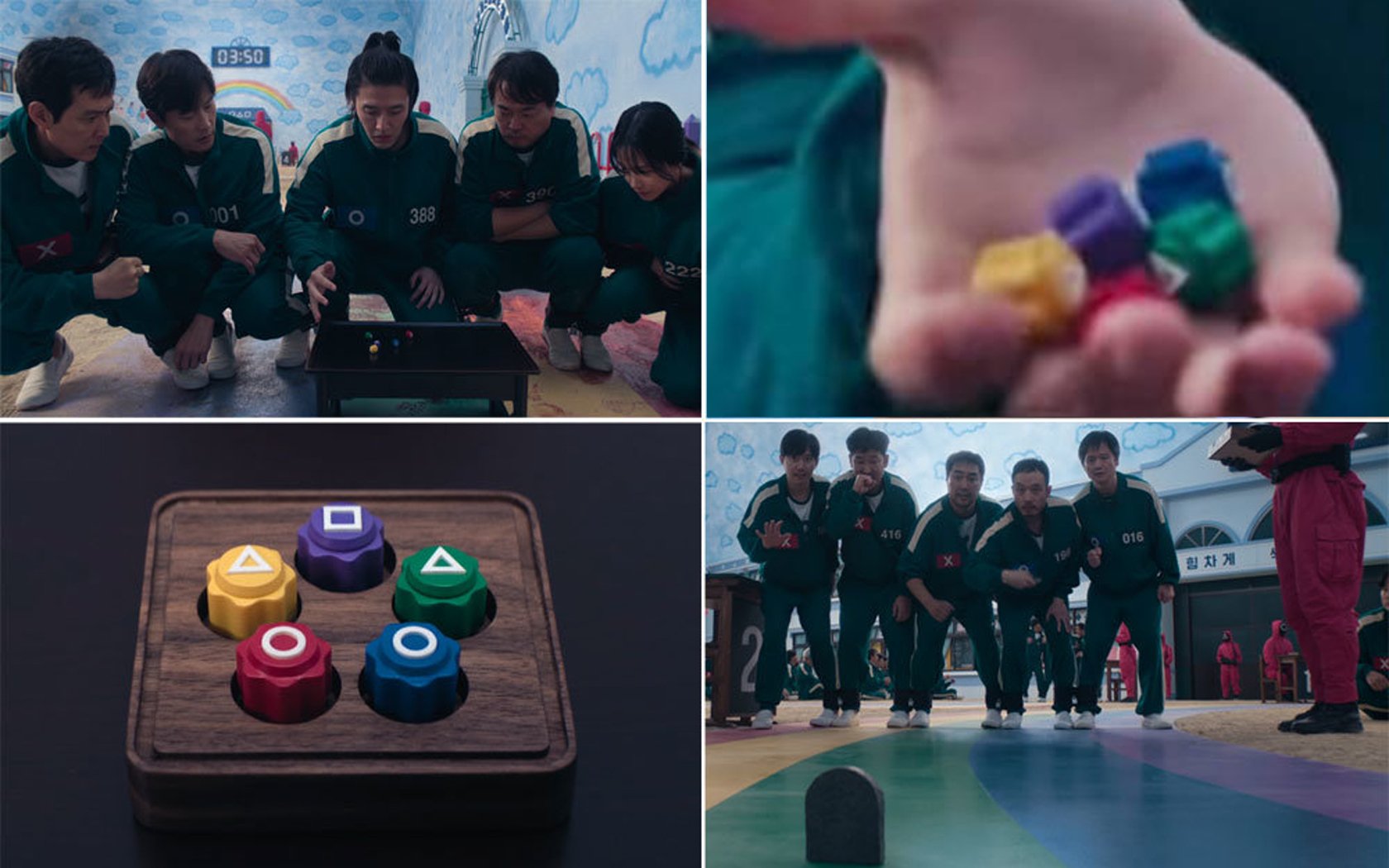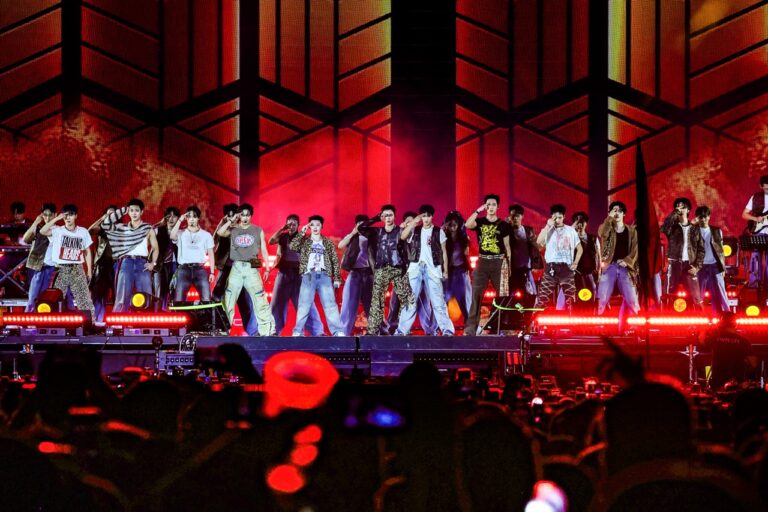The return of Squid Game brings more than just suspense and shocking twists—it revives traditional Korean games that hold deep cultural significance. These games, such as 딱지 (Ttakji), 비석치기 (Biseokchigi), 공기놀이 (Gonggi Nori), 팽이 돌리기 (Paeng-i Dolligi), and 제기차기 (Jegichagi), are not just nostalgic pastimes. They are living symbols of Korean heritage, representing the creative ingenuity and communal spirit that have been passed down through generations.
Let’s explore these games, understand their roots, and why they continue to captivate Koreans and a global audience today.
딱지 (Ttakji): The Art of Precision and Strategy
Ttakji is deceptively simple yet endlessly satisfying. Players create square tiles by folding paper and take turns trying to flip their opponent’s ttakji by striking it with their own. At first glance, it’s a lighthearted test of force and aim, but beneath the surface lies a lesson in strategy and creativity.
The beauty of ttakji is its accessibility. All you need is paper and a little skill in folding, making it a favorite among Korean children. In the past, kids would make their ttakji from old newspapers or leftover wrapping paper, turning scraps into tools for fun. It’s a reminder of the ingenuity that has long been a hallmark of Korean culture—creating joy from the simplest materials.
Playing ttakji also fosters a competitive yet friendly spirit. Children gather in groups, cheering each other on, sharing tips, and occasionally trading their carefully crafted tiles. In a way, ttakji is not just about flipping tiles but rather about building friendships and community.
비석치기 (Biseokchigi): Toppling Stones and Building Bonds
Biseokchigi involves knocking over small upright stones with a thrown object. Once a staple in Korean villages, the game was particularly popular in rural areas where stones were abundant, and open spaces provided the perfect setting.
More than a test of aim, Biseokchigi is about resilience. After each round, the stones are reset, and players try again. This repetition mirrors the Korean values of persistence and determination. The excitement is palpable, as players and spectators alike cheer when the stones fall. It’s a game that turns humble rocks into symbols of joy and connection.
공기놀이 (Gonggi Nori): A Test of Skill and Coordination
Known as Korean jacks, Gonggi Nori is a game of tossing and catching small stones or plastic pieces. Traditionally played by young girls, it demands dexterity and focus. This gender association likely stems from historical societal roles, where girls were often encouraged to engage in activities emphasizing fine motor skills and patience, while boys gravitated towards more physical pursuits. Gonggi Nori, aligning with the traditional values of grace and precision expected from girls, also fostered social bonds as girls gathered to play together.
Generations of Koreans have played it, with mothers teaching their daughters, and so on. Each stage of the game becomes progressively more challenging, requiring precision and quick reflexes. Players often invent new rules or variations, adding their own spin to the game. For many, the game is not just about winning but finding joy in the challenge.
팽이 돌리기 (Paeng-i Dolligi): The Timeless Spin
Paeng-i Dolligi, the art of spinning tops, has been a staple of Korean culture for centuries. During the Joseon Dynasty, it was especially popular in winter when the frozen ground made for perfect spinning conditions. The game requires patience, skill, and a steady hand, as players compete to see whose top spins the longest or performs the best tricks.
The game requires skill, patience, and a steady hand. Players use strings to spin their tops, competing to see whose top lasts the longest or performs the best tricks. In the past, families would gather to play together, passing down techniques and strategies from one generation to the next.
제기차기 (Jegichagi): Kicking Tradition into the Air
Jegichagi, a game resembling hacky sack, involves kicking a jegi—a weighted shuttlecock—to keep it airborne for as long as possible. Traditionally, it was played during festivals like Lunar New Year, bringing families and communities together. The game’s origins date back to ancient times, influenced by China’s cuju, an early form of football, but Koreans have made it uniquely their own.
During my time in Korea, I joined a student club at Yonsei University, and at our first meeting, we played Ttakji. It was fascinating to see a game that I had previously only seen on screen come to life. While most of the Koreans and soccer players dominated the game, it was still a blast to try my hand at it and bond with others over this simple, yet competitive, pastime. The rhythmic kicking and the laughter that followed every missed shot made the experience more enjoyable, turning a simple game into a moment of shared joy.
Why These Games Matter
These traditional games are a window into Korea’s cultural fabric. They highlight the resourcefulness of a society that created joy and connection with limited resources. These games are rarely played alone; they’re often communal experiences, reinforcing the values of friendship, persistence, and creativity.
In today’s fast-paced world, these traditional games offer a chance to slow down and reconnect with our roots, with each other, and with the simple pleasures of life. For Koreans, they are a source of pride, a link to their heritage that continues to thrive in playgrounds, festivals, and even popular media.
Modern-Day Revival
Thanks to Squid Game, there’s a growing interest in these traditional games both in Korea and globally. Efforts to keep these games alive are ongoing, with schools and cultural centers teaching them to younger generations. Festivals often feature traditional game competitions, and some games have even found a new audience through their portrayal in global entertainment. Even among adults, these games are finding new life, serving as a reminder to slow down and enjoy life’s simpler pleasures.
By celebrating these games, we ensure that their stories—and the values they represent—continue to inspire future generations. Whether you’re flipping a ttakji, spinning a top, or kicking a jegi, you’re not just playing a game. You’re connecting with centuries of tradition and the enduring spirit of Korean culture.
These games may appear simple, but their cultural depth is profound. They’re not just about winning or losing—they’re about community, creativity, and the universal language of play.




